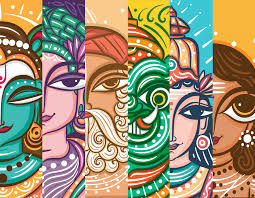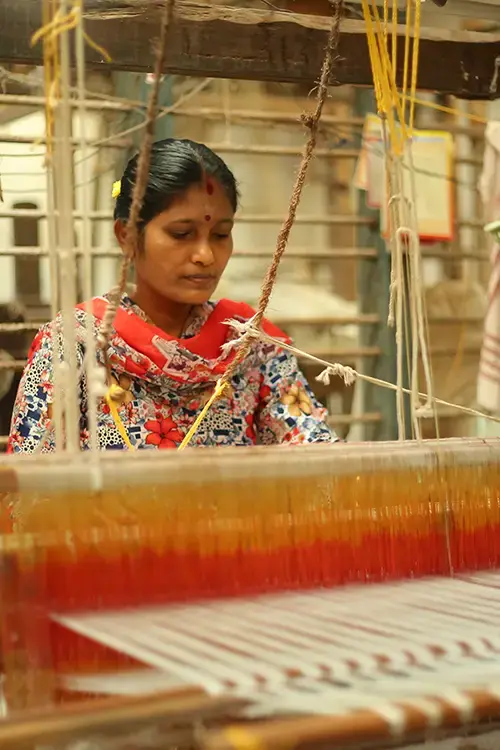
Menu

Kerala’s handloom weaving traditions are a vibrant tapestry woven with stories of folklore, nature, and everyday life. Central to this legacy is the iconic Kasavu saree—a simple yet elegant white or off-white fabric bordered with shimmering gold threads. This timeless fabric has adorned Kerala’s women for centuries, worn especially during festivals, weddings, and cultural celebrations.
The craft of Kasavu weaving is deeply rooted in Kerala’s rural communities, passed down through generations of skilled artisans. Using traditional pit looms, weavers transform cotton threads into delicate fabric, painstakingly adding the signature golden borders made from real gold or now more commonly from metallic yarn. Each weave tells a story—of the loom’s rhythmic dance, the artisan’s dedication, and the cultural identity embedded in every thread.
Beyond Kasavu, Kerala boasts other distinctive textiles that reflect its rich folklore. Designs inspired by nature—like lotus flowers, peacocks, and mango motifs—adorn fabrics used for traditional attire and household decor. These patterns often echo stories and myths from Kerala’s past, turning everyday clothing into wearable heritage.
Efforts to revive and sustain handloom weaving have gained momentum, with cooperatives and cultural organizations encouraging young artisans to embrace this heritage. Contemporary designers also experiment by blending Kasavu with modern styles, making it relevant for today’s global fashion scene.
Handloom weaving in Kerala isn’t just about fabric—it’s about preserving a living tradition that celebrates community, identity, and artistry. Wearing a Kasavu saree or dhoti is to wear a piece of Kerala’s soul.

@THE INDIAN ART COTTAGE
© The Indian Art Cottage | All Rights Reserved | 2025